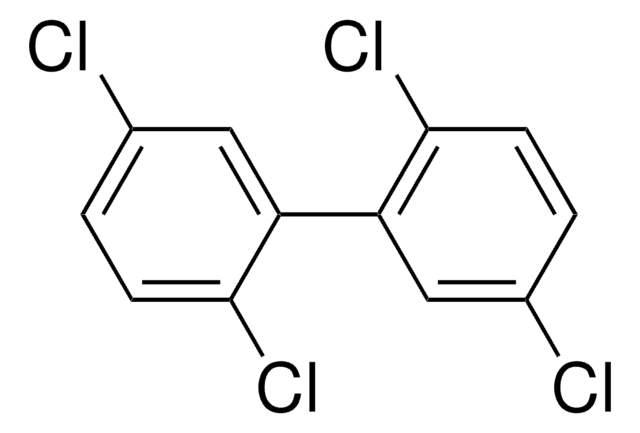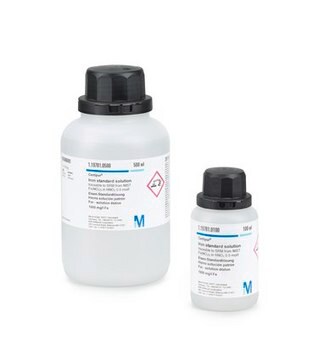BCR291
2,4,4′-Trichlorobiphenyl
BCR®, certified reference material
About This Item
Recommended Products
grade
certified reference material
agency
BCR®
manufacturer/tradename
JRC
format
neat
storage temp.
2-8°C
SMILES string
Clc1ccc(cc1)-c2ccc(Cl)cc2Cl
InChI
1S/C12H7Cl3/c13-9-3-1-8(2-4-9)11-6-5-10(14)7-12(11)15/h1-7H
InChI key
BZTYNSQSZHARAZ-UHFFFAOYSA-N
Looking for similar products? Visit Product Comparison Guide
Analysis Note
BCR291
Legal Information
signalword
Warning
hcodes
Hazard Classifications
Aquatic Acute 1 - Aquatic Chronic 1 - STOT RE 2
Storage Class
11 - Combustible Solids
wgk_germany
WGK 3
flash_point_f
Not applicable
flash_point_c
Not applicable
Certificates of Analysis (COA)
Search for Certificates of Analysis (COA) by entering the products Lot/Batch Number. Lot and Batch Numbers can be found on a product’s label following the words ‘Lot’ or ‘Batch’.
Already Own This Product?
Find documentation for the products that you have recently purchased in the Document Library.
Our team of scientists has experience in all areas of research including Life Science, Material Science, Chemical Synthesis, Chromatography, Analytical and many others.
Contact Technical Service







